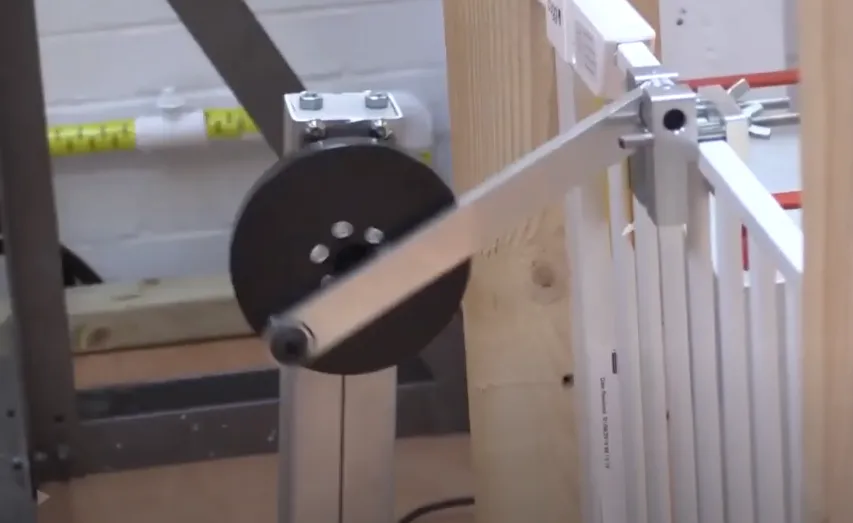BS EN 1021-1 Ignitability Testing of Children’s Furniture Smouldering Cigarette
The BS EN 1021-1 standard is a critical part of the safety framework for furniture products designed and manufactured for children. This test specifically evaluates the ignitability properties of children's furniture against smouldering cigarettes, which is one of the leading causes of fire-related incidents in such environments. Compliance with this standard ensures that the materials used in these products are resistant to ignition by a smouldering cigarette, thereby reducing the risk of fire and promoting safer furnishings.
The testing protocol is designed to simulate real-world scenarios where a child might inadvertently leave a burning cigarette on furniture. The test involves placing a lit cigarette at specified points on various parts of the furniture, typically the seat or backrest, and monitoring for any signs of ignition within 15 minutes. This duration aligns with the time it would take for a cigarette to smoulder out completely.
The significance of this test cannot be overstated, especially in light of global statistics that highlight the disproportionate risk faced by children in fire-related incidents. By adhering to BS EN 1021-1, manufacturers not only meet regulatory requirements but also demonstrate their commitment to safeguarding young lives. The test is particularly relevant for upholstered furniture items such as chairs, sofas, and beds, where the materials used can significantly influence the outcome of a fire.
The methodology involves rigorous preparation and execution steps that are crucial for accurate results. Specimens are cut from actual products or fabricated to specific dimensions that represent real-world configurations. These specimens undergo detailed pretreatment processes including conditioning in controlled environments to ensure they reflect the true characteristics of the materials involved. The testing apparatus is designed to simulate a controlled environment where factors like temperature, humidity, and air flow can be precisely managed.
The test results are evaluated based on clear acceptance criteria outlined in the standard. A specimen passes the test if it does not ignite within 15 minutes after the cigarette has been removed. If ignition occurs, the product fails the test, indicating a potential risk of fire under specified conditions. This stringent approach ensures that only safe products reach market shelves.
The importance of this testing cannot be overstated in terms of public safety and regulatory compliance. By conducting these tests, manufacturers ensure their products meet or exceed international standards set by bodies like the European Committee for Standardization (CEN). Such adherence fosters trust among consumers who are increasingly aware of the risks associated with poorly designed furniture.
The broader impact extends beyond individual product safety to influence entire industries and consumer behavior. As more companies adopt these practices, it sets a new benchmark for quality assurance across the manufacturing sector. Consumers benefit from safer products while businesses gain an advantage through enhanced brand reputation and market differentiation.
Scope and Methodology
The scope of BS EN 1021-1 encompasses a variety of children's furniture items including chairs, sofas, beds, and other similar products. The methodology involves several key steps to ensure accurate and consistent testing results:
- Preparation of Specimens: Cut pieces from actual products or fabricate specimens that replicate the intended use and design.
- Pretreatment: Condition these specimens in controlled environmental conditions to simulate real-world usage scenarios.
- Testing Setup: Arrange the test apparatus to ensure precise control over temperature, humidity, and airflow.
- Application of Cigarettes: Place lit cigarettes at specified points on the specimen and observe for any signs of ignition within 15 minutes.
- Evaluation: Compare observed results against predefined acceptance criteria to determine compliance with the standard.
The methodology is designed to be both rigorous and reproducible, ensuring that all tests conducted under this standard yield reliable and consistent outcomes. This approach not only enhances product safety but also provides a robust framework for continuous improvement within manufacturing processes.
Quality and Reliability Assurance
- Rigorous Calibration Procedures: All testing equipment is regularly calibrated to ensure accuracy and precision in measurements.
- Detailed Documentation: Comprehensive records are maintained for every test conducted, including environmental conditions and observed results.
- Consistent Reporting: Standardized formats are used for reporting outcomes, ensuring clarity and consistency across all reports.
- Training Programs: Regular training sessions are provided to staff involved in testing to maintain high levels of expertise and proficiency.
Our commitment to quality extends beyond mere compliance with standards. We invest heavily in cutting-edge technology and skilled personnel to ensure every test is conducted to the highest standards. This approach guarantees that our clients receive accurate, reliable results that can be trusted as definitive evidence of product safety.
Customer Impact and Satisfaction
- Enhanced Consumer Trust: By adhering to rigorous testing protocols like BS EN 1021-1, we help build trust among consumers regarding the safety of products they purchase.
- Increased Market Competitiveness: Meeting or exceeding regulatory requirements can set your business apart from competitors, enhancing market appeal and brand reputation.
- Compliance with Regulations: Ensuring that all products comply with relevant standards helps avoid potential legal issues and penalties associated with non-compliance.
- Improved Product Safety: Rigorous testing reduces the risk of product-related accidents, contributing to a safer environment for end-users.
We understand the importance of these factors in maintaining customer satisfaction. Our services are designed not only to meet but exceed expectations, ensuring that every product we test is safe and reliable. This commitment translates into increased customer confidence and loyalty, ultimately driving business success.





